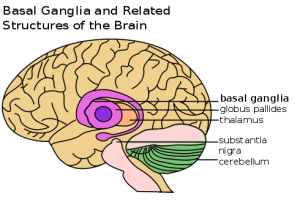Imagine this: it’s almost time for your winter vacation, and you’re struggling to decide where you want to go. What you do know, however, is that you want to visit a mud bath, as you’ve heard they do wonderful things for your skin. Some potential travel destinations include El Totumo Mud Volcano in Colombia or the Dead Sea mud bath at Ein Gedi, but you might not have stopped to consider the amazing clay deposits that can be found right here, in beautiful British Columbia!
As well, you may not be aware of the non-cosmetic properties possessed by clay. Did you know that a clay from Northern British Columbia, called Kisameet Clay, is currently being investigated as a potential treatment for life-threatening bacterial infections? If you didn’t, that’s alright! Continue reading to find out more about this incredible substance and its importance in treating infections.

A photograph taken near the site of where Kisameet Clay is found, in Northern British Columbia. Source: Wikimedia Commons. This image is part of the public domain.
What are antibiotic-resistant bacteria?
The increasing presence of antibiotic-resistant bacteria is a problem that researchers around the world are determined to solve. The World Health Organization estimates that more than 17 million people die each year as a result of an infectious disease, which is a disease caused by a bacteria or “pathogen”. Researchers are especially interested in a group of bacteria called the ESKAPE Pathogens, as they are responsible for causing the highest number of serious infections in hospitals throughout the world. Named cleverly for their ability to ‘escape’ the antibacterial effects of antibiotics, these pathogens pose a significant threat to vulnerable immune systems.

A schematic of how antibiotic resistance develops in a population of bacteria. Selection refers to the survival of only bacteria that are resistant to the antibiotic, resulting in a population of bacteria that are entirely resistant. This image is part of the public domain. Source: Wikimedia Commons.
What is being done to address this problem?
To get more information about Kisameet Clay and how it could be used to solve the predicament of antibiotic resistance, we spoke with Dr. Julian Davies. He is the principal investigator at the Davies Laboratory at the University of British Columbia and leads a team of experts in antibiotics, bacteria, and antibiotic resistance. To perform their investigations in 2015, they extracted a substance called a leachate from the clay. Essentially, a leachate is a liquid that is drained from a solid material such as Kisameet Clay. Listen to this podcast to learn about Kisameet Clay and what it does!
Given all that information about Kisameet Clay and the effect it has on bacteria, you might be wondering how they transform the clay into the leachate mentioned in our podcast. The goal of producing the leachate is to “leach out” the active components of the clay into a substance that can be used to kill bacteria. Watch this video to find out exactly how Dr. Davies and his team take the raw Kisameet Clay and turn it into a potent, bacteria-killing leachate!

Source: Youtube https://www.youtube.com/watch?v=KEaypoHdBNA&fbclid=IwAR0sOVfndEDP9H4hHfJvzBSs8pHkIvQUwIl-G5gnqdbcu82fVpxKNHcHoG4
If you’re still wondering why all of this is important, consider the fact that antibiotic resistance is considered to be one of the top three threats to global public health. According to the World Health Organization:
“Antibiotic resistance is rising to dangerously high levels in all parts of the world. New resistance mechanisms are emerging and spreading globally, threatening our ability to treat common infectious diseases. . . . Without urgent action, we are heading for a post-antibiotic era, in which common infections and minor injuries can once again kill.”
It is clear that alternative treatments for bacterial infections, such as Kisameet Clay, must be explored. Of course, the news is not all bad, thanks to the work of researchers such as Dr. Davies and his team! In terms of next steps for Kisameet Clay, Dr. Davies hopes to begin animal trials and from there progress to clinical trials, so that the Kisameet Clay can gain approval from Health Canada. There are no toxic side effects associated with the use of Kisameet Clay in humans, which is an excellent sign for the future of this medicine!
Dr. Davies hopes to eventually develop Kisameet Clay as a standard clinical treatment for bacterial infections, which means we are one step closer to being prescribed clay instead of a pill for infections.
The next time you’re putting on a clay face mask, we hope you remember the importance of natural substances such as clay in the development of medical treatments, and how scientists like Dr. Davies are working hard to save lives around the world!
Maya Liepert, Baihao Luo, Reshmin Randhawa, Daniela Yanez






